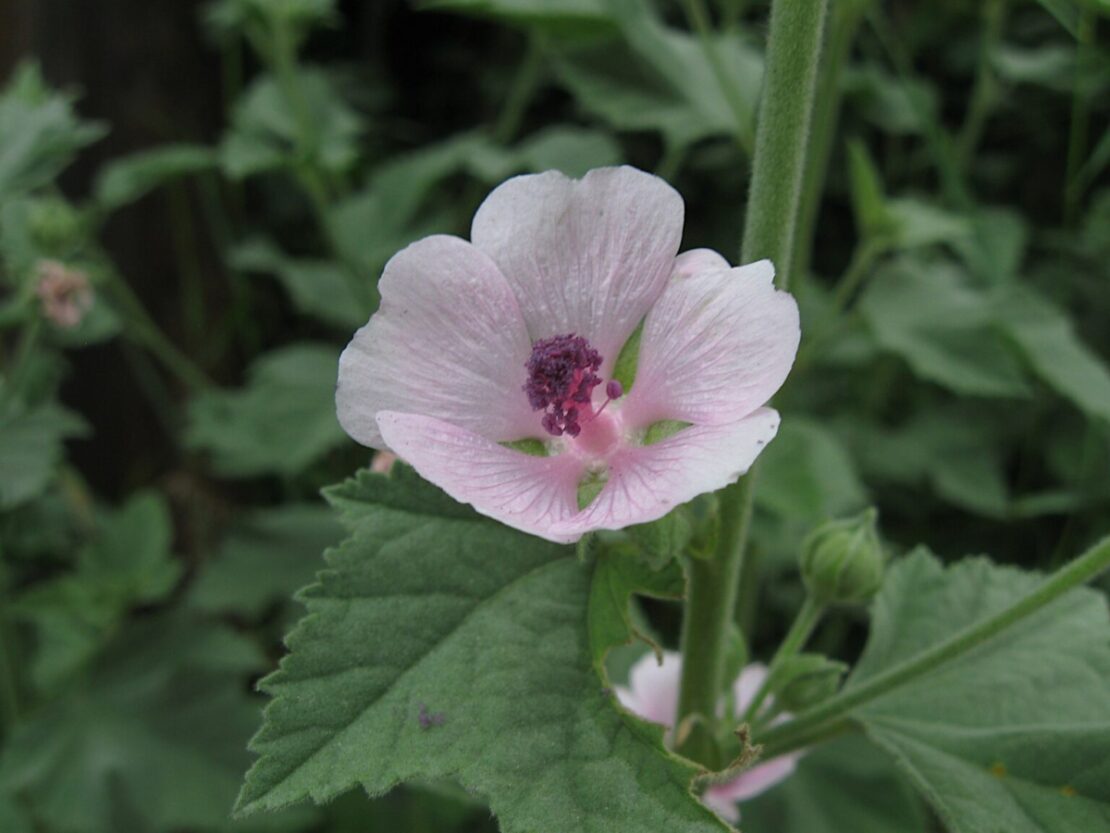
3 Moistening Herbs to Explore
In an article in The Herbarium, herbalist Erin Gangi discusses the role of moistening herbs through the lens of a few traditional medicine systems and outlines the uses, safety, and dosage of some specific herbs. This excerpt from the article explores the properties and benefits of moistening herbs and shares profiles of a few key herbs that can address dryness in the body.
Around the world, people have long relied on their senses to classify herbs. Through the power of observation, frameworks were developed to define and understand the energetics of people, the energetics of plants, and relationships between plants and people, and these frameworks continue to be utilized today.
Understanding herbal energetics is like learning a language that opens another level of comprehension and communication, allowing one to observe and utilize the energetics of people and plants to enhance one’s ability to create specific formulations and individualize herbal suggestions. When it comes to observing moisture in a person’s constitution, it can be thought of on a spectrum ranging from dry to damp. In turn, plants are classified on a spectrum from drying to moistening.
Many herbs have drying actions on the body, so knowing which herbs have moisturizing actions can enhance your ability to balance formulas and meet the needs of an individual’s constitution. This is especially important for cases in which you want to use herbs that may be drying, but don’t want to cause imbalance on a constitutional level, particularly if one already has more of a dry constitution.
Classification of Moistening Herbs
Herbs are classified as moistening when they display the ability to increase the moisture content of tissues, meaning that they bring lubrication and softness to dry, hardened, or brittle tissues (Easley & Horne, 2016). There are two categories of moistening herbs: demulcent and emollient. The herbal action demulcent refers to herbs that are soothing, cooling, moistening, and lubricating to mucous membranes. The herbal action emollient is very similar to demulcent, yet is typically used to indicate an external action (through topical application) as opposed to an internal one.
A distinguishing feature of moistening herbs is their mucilaginous texture—that is, a slippery or slimy texture that can soothe irritated or inflamed tissues. To get the most mucilage content from demulcents, they are best extracted in water as opposed to alcohol (Easley & Horne, 2016), as polysaccharides are water soluble. Herbs that are rich in fixed oils, or impact oil utilization in the body, are also moistening; this includes most seeds and nuts, with flax seeds being particularly useful as they are rich in mucilage as well as oils (mcdonald, n.d.).
Now, let’s take a look at some moistening herbs and their potential uses!
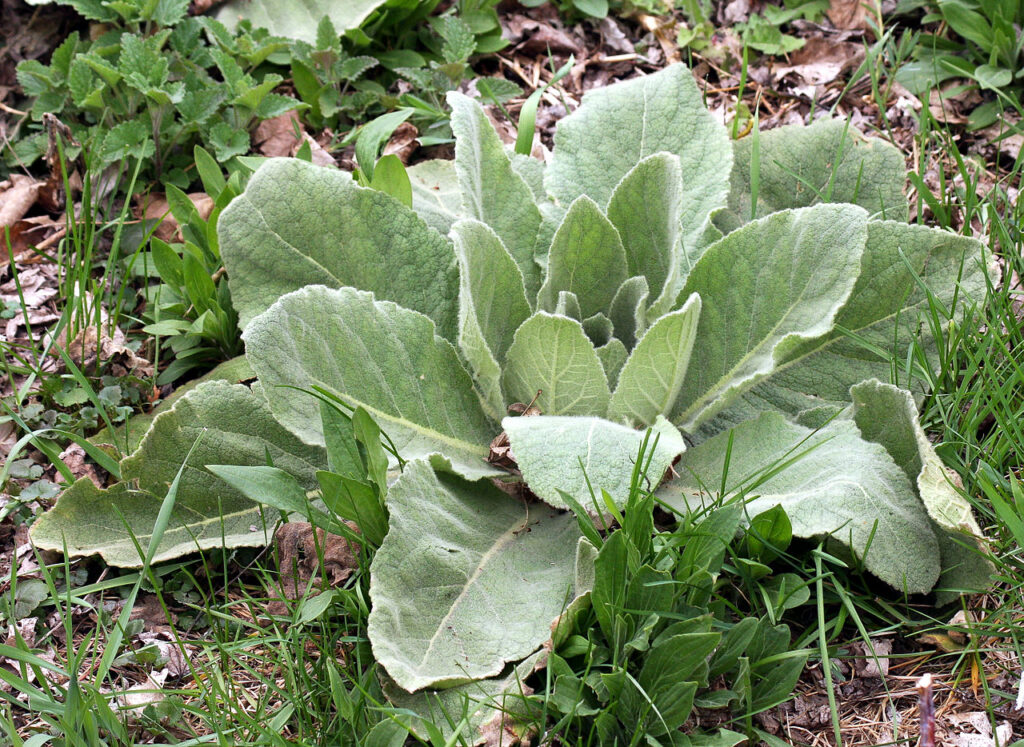
Mullein (Verbascum thapsus)
The leaves, flowers, and roots of mullein are used in herbalism. Energetically, mullein is considered moistening and cooling. Mullein has the ability to reduce inflammation while stimulating fluid production, thus encouraging expectoration (Hoffmann, 2003); this is attributed to its saponin content which leads to its ability to loosen mucus (Easley & Horne, 2016). Mullein leaf has an affinity for the lungs and is often used for chronic lung issues, such as asthma and chronic obstructive pulmonary disease (COPD) (Easley & Horne, 2016). Mullein leaf is also helpful in soothing colds and coughs, and is specifically indicated for dry coughs (Easley & Horne, 2016). Dry coughs can be indicative of thick or hardened mucus; as a demulcent, mullein can thin mucus, making it easier to expel.
The flower of mullein offers anti-inflammatory properties and contains more mucilage than the leaf (Hoffmann, 2003; Tilgner, 2009). Mullein flower is commonly extracted in oil for use in earaches for its cooling, soothing action (Frawley & Lad, 1988). Mullein root is specifically indicated for low back pain and inflammation (Easley & Horne, 2016).
Safety: Mullein seeds contain a poisonous substance, rotenone (Easley & Horne, 2016). The leaf, flower, and root of mullein are generally regarded as safe (Hoffmann, 2003).
Dosage: When it comes to lung issues, a standard infusion (made with 1 oz dried herb in 1 quart of water) is the best way to prepare mullein; it is suggested to consume 4-8 fl oz, 2-4 times per day (Easley & Horne, 2016). A mullein root tincture is commonly used for back issues; in this case, consume 10 drops-3 mL, 3 times daily (Easley & Horne, 2016).
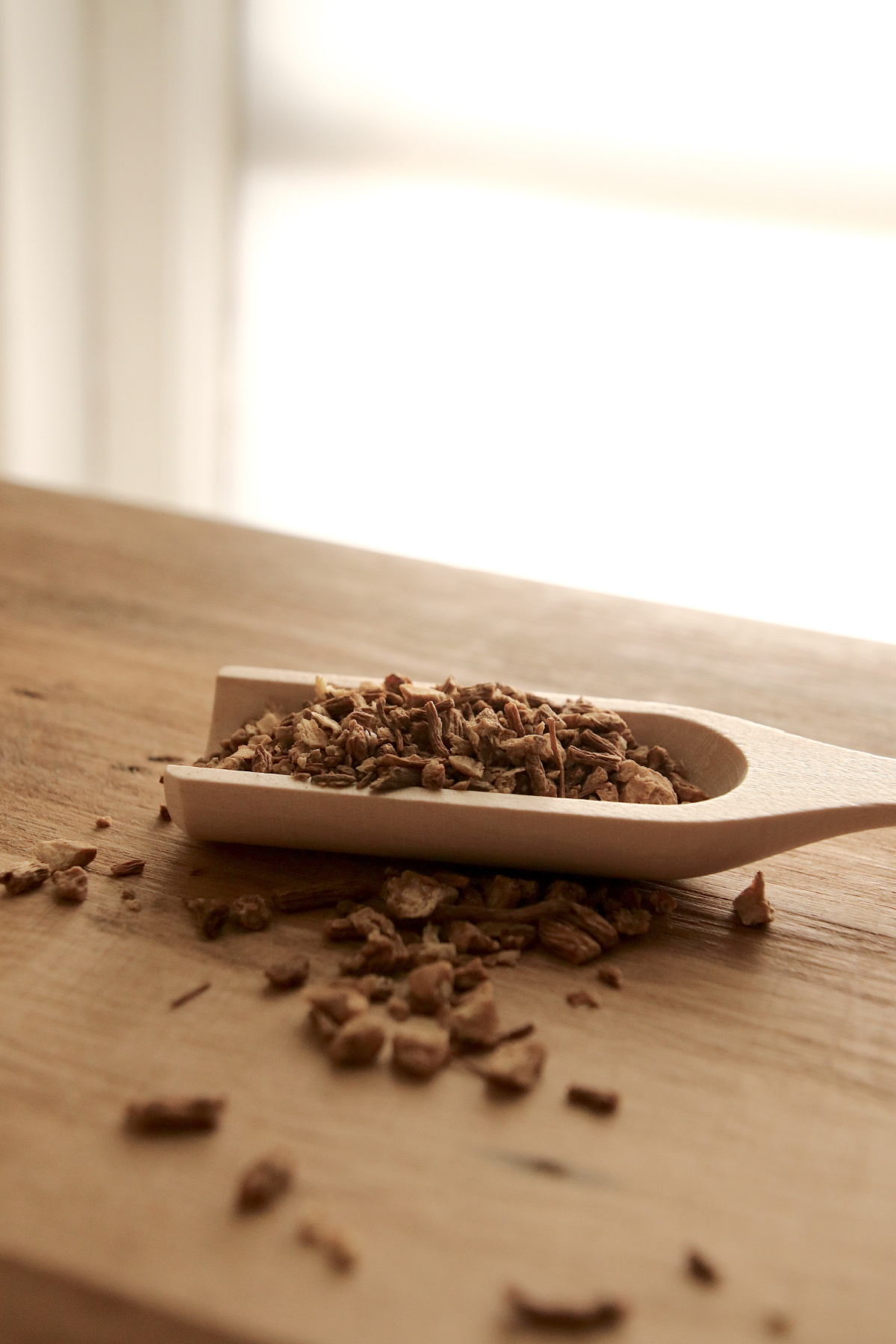
Dong Quai (Angelica sinensis)
Dong quai is energetically warming and moistening (Tierra, 1990). The root is the part of the herb which is used. In Chinese medicine, dong quai is considered a blood tonic and has a traditional use in regulating menstruation (Zhou et al., 2014). Dong quai is used for dysmenorrhea as well as endometriosis; its beneficial effects are attributed to its anti-inflammatory, antispasmodic, and analgesic actions (Romm, 2018). This herb is also traditionally used as a uterine tonic, which is supported by animal studies showing that dong quai has stimulating and relaxing effects on uterine tissue (Romm, 2018). Dong quai helps to improve blood circulation by dilating blood vessels (Romm, 2018) and moistening the digestive tract, easing constipation (Tierra, 1990).
Safety: Dong quai should not be used during pregnancy or in times of heavy menstrual flow (Tierra, 1990). Dong quai may slow blood clotting and, when taken with pharmaceuticals that have a similar effect, may cause bruising and bleeding (Weil, n.d.). It is recommended to discontinue use of dong quai a week prior to any surgery due to this effect (Weil, n.d.).
Dosage: Dong quai can be prepared as a standard infusion or taken in powdered or tinctured forms; general daily dosage is 2-3 g, taken in 3 divided doses during the day (Weil, n.d.).
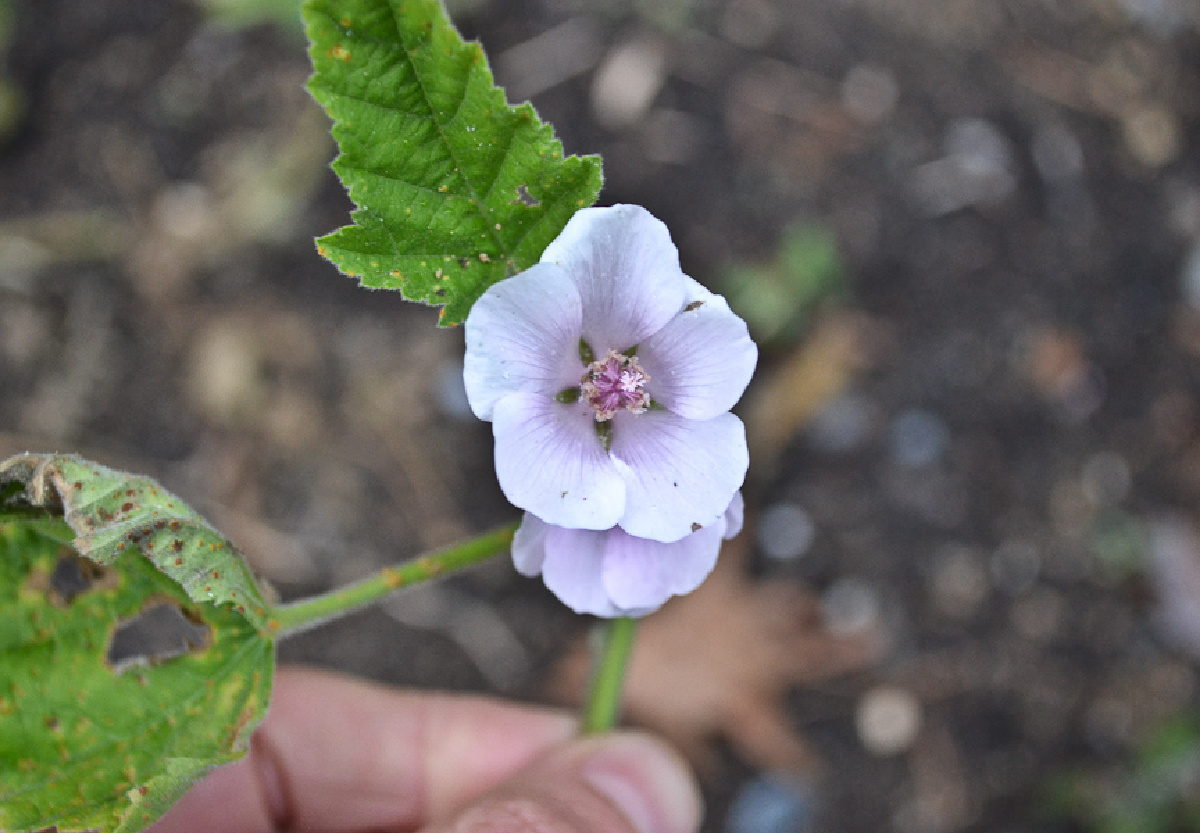
Marshmallow (Althaea officinalis)
Marshmallow is energetically cooling and moistening, and the leaves and roots of this plant are used in herbalism. The root is most commonly used to ease inflammation of the digestive system, and is the part of the plant with the highest mucilage content, with 18-35% consisting of polysaccharides (Hoffmann, 2003). The leaf is indicated in inflammatory conditions of the urinary system and lungs (Hoffmann, 2003). Marshmallow is also indicated in dry cough (Frawley & Lad, 1988).
Marshmallow has a sweet taste and is a nutritive and rejuvenative tonic (Frawley & Lad, 1988). It is also considered a harmonizing herb in diuretic formulations (Frawley & Lad, 1988), due to the fact that the moistening properties of marshmallow help to balance formulas that are naturally drying (including diuretic herbs), allowing for beneficial herbal actions to occur while avoiding excess dryness or exacerbating constitutional dryness.
Safety: Marshmallow is generally regarded as safe (Drugs and Lactation Database, 2021). It is important to be aware that use of marshmallow may delay absorption of medications taken at the same time (Hoffmann, 2003).
Dosage: To get the most mucilage content, a cold overnight infusion of the root is ideal; infuse 2-4 g of the root in 1 cup of cold water (Hoffmann, 2003). If using a tincture, which is the form commonly used when the aim is to soften lymph nodes, the suggested dosage is 10-60 drops, 1-4 times per day (Easley & Horne, 2016).
In Closing, Quench Your Curiosity
To discover more about moistening herbs, head on over to The Herbarium website to check out this offering, which shares several more plant profiles of moistening herbs, some of which may happen to grow outside your door! The Herbarium is a fabulous go-to resource for all things herbal, and members get access to articles from knowledgeable herbalists, an extensive monograph database with nearly 200 plants, a variety of media from ebooks to videos, and a growing collection of intensives on popular topics such as fertility support and botanical nootropics. We hope to see you there!
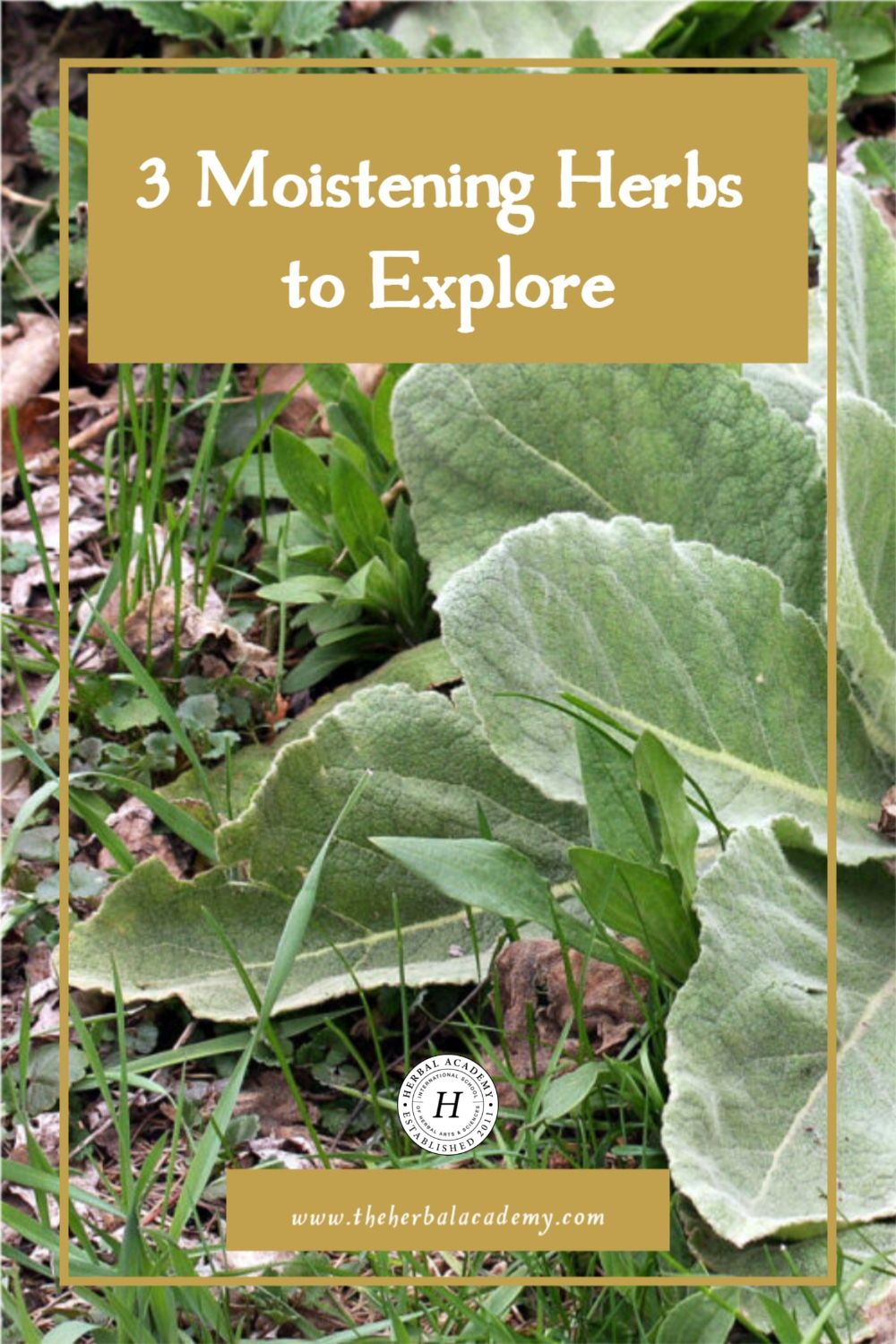
REFERENCES
Drugs and Lactation Database (LactMed). (2021, February 15). Marshmallow. https://www.ncbi.nlm.nih.gov/books/NBK501839/
Easley, T., & Horne, S. (2016). The modern herbal dispensatory: A medicine-making guide. North Atlantic Books.
Frawley, D., & Vasant, L. (1988). The yoga of herbs: An ayurvedic guide to herbal medicine (2nd ed.). Lotus Press.
Hoffmann, D. (2003). Medical herbalism: The science and practice of herbal medicine. Healing Arts Press.
mcdonald, j. (n.d.). Herbal properties and actions. https://herbcraft.org/properties.html
Romm, A. (2018). Botanical medicine for women’s health (2nd ed.). Elsevier.
Tierra, M. (1990). The way of herbs. Pocket Books.
Tilgner, S.M. (2009). Herbal medicine from the heart of the earth (2nd ed.). Wise Acres.
Weil, A. (n.d.). Dong quai root. https://www.drweil.com/vitamins-supplements-herbs/herbs/dong-quai/
Zhou, L., Xu, J., & Peng, Y. (2014). Medicinal crops. In N.K. Van Alfen (Ed.), Encyclopedia of agriculture and food systems (pp. 223-230). Elsevier. https://doi.org/10.1016/B978-0-444-52512-3.00152-2







